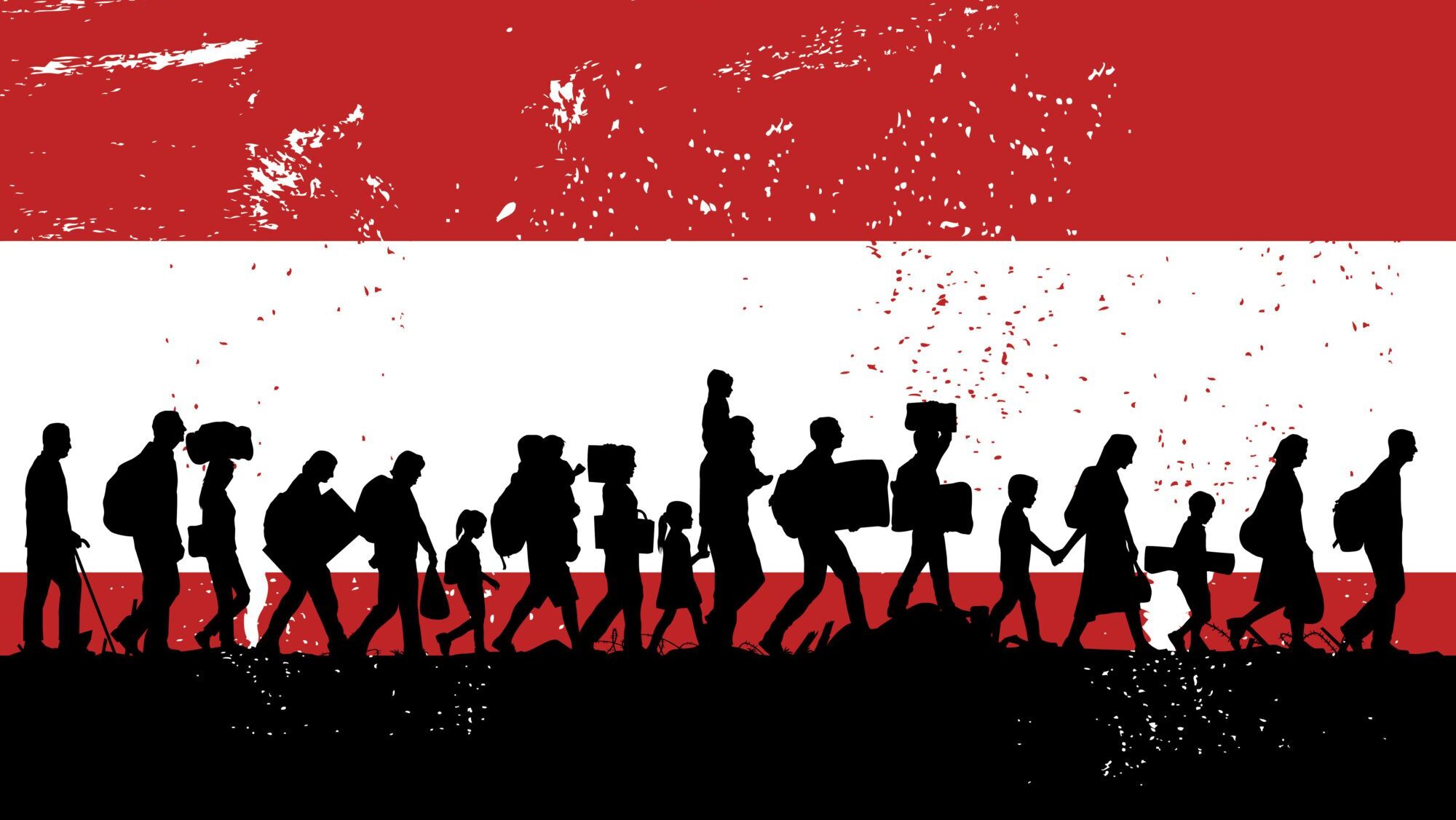
Seita / Shutterstock
Migration has cost Austria a whopping €21.6 billion in ten years, according to a report by the economic research institute EcoAustria. The institute made the calculations based on state revenues and expenditures starting from 2015—the beginning of the European migration crisis—to 2023, and financial projections for 2024-25.
Austria has faced a growing number of migrants entering the country in recent years, with 112,000 people seeking asylum in 2022. Though the number decreased last year—56,000 migrants claimed asylum from January until November—it was still the third-highest number since the beginning of the migration crisis. The issue has had political consequences: the staunchly anti-immigration FPÖ party has been leading polls last year, with almost a third of voters supporting them.
Citing the recent report, conservative media outlet Exxpress lists the things that could have been paid for with more than €20 billion: 42,000 homes; more than five defence budgets; or four brand new metro lines.
The report takes into account revenues in connection with migration—e.g., taxes paid by employed migrants—which lowers the net cost of migration. However, according to Der Standard, only 45% of those who have received asylum until 2022—largely from Syria, Afghanistan, Somalia, Iraq, and Iran—are employed and pay taxes. The total bill for migration between 2015 and 2025 is still expected to land in the vicinity of €8.8 billion. The report echoes findings from a recently published Dutch paper from the University of Amsterdam School of Economics that has studied the consequences of immigration for public finances. According to the researchers, the net impact of immigration on public finances amounted to €17 billion in 2016 alone, and if migration to the Netherlands remains at the 2015-2019 level—the reviewed period of the study— the annual budget burden will gradually increase to €50 billion per year.
The most interesting part of the Dutch study is not the sheer amount that has been spent by the state on accommodating migrants, but the fact that, while the net costs of non-Western immigration averaged about €27 billion per year over the 2015-2019 period, Western immigration was roughly budget neutral.
In other words: while Westerners—defined as people from North America, Europe, and the Far East—were net contributors, non-Westerners—nationals of African and Middle Eastern countries—were putting a burden on the budget. The largest positive net contribution—€625,000—is made by migrant workers from Japan, North America, and Oceania, while the largest net cost—also €625,000—is caused by asylum migrants from Africa, the report states.
In a worrying sign for the Netherlands, the number of asylum seekers has indeed been growing: 34,860 migrants (and following family members) entered the Netherlands in 2021, and 46,460 in 2022, the two highest rates since 2015, the start of the migration crisis. To make matters worse, last year’s numbers may be even higher, with 43,585 migrants (including family members) making their way to the country from January to November. The most common nationalities among asylum seekers were Syrian, Turkish, Eritrean, Yemeni, Iraqi, and Sudanese—nationalities that constitute a net financial burden for the public purse.
While countries like Germany have not carried out such detailed studies, a recent report by the German finance ministry does reveal that the state spent €48 billion on migration last year. The overall costs covered reception, housing, migration registration, educational support for children and youth, and various social expenses, at a cost equal to Germany’s national defence budget.
CDU MP Stefan Heck, unnerved by the figures, said to Bild that Germany needs a similar study:
Every political decision is examined for financial consequences – migration policy must be no exception! We also need such figures for Germany!
